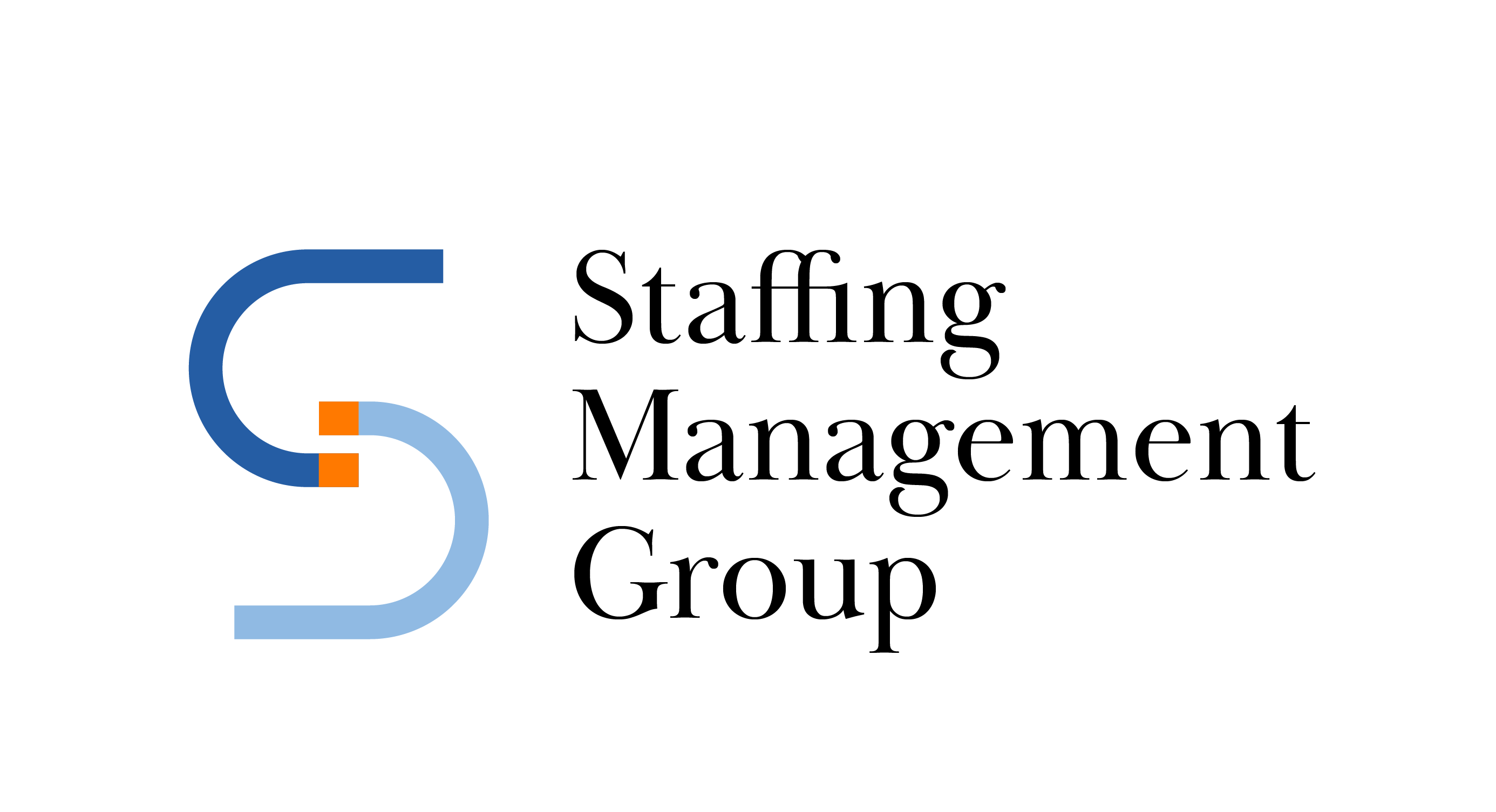AI-Powered Back Office: How Automation Is Slashing Costs for Staffing Firms in 2025
Let’s be real: your back office is bleeding money right now. The average staffing firm spends 38% of revenue on administrative costs, while your recruiters waste 75% of their time on tasks that don’t generate a single dollar.
These aren’t just numbers. They’re the difference between scaling your staffing firm or watching competitors zoom ahead in 2025.
AI-powered back office automation isn’t just a fancy tech upgrade anymore – it’s financial survival. By automating the mundane (think invoicing, timesheet processing, and candidate screening), firms are cutting operational costs by up to 60%.
But here’s what most agencies miss when implementing automation: it’s not about replacing people. It’s about unleashing them. And the firms that understand this difference? They’re seeing something even more valuable than cost savings…
The Current Back Office Crisis in Staffing Firms

A. Rising operational costs hampering profitability
The numbers don’t lie. Staffing firms are bleeding money on back-office operations. A typical mid-sized staffing company now spends 18-25% of revenue on administrative functions that generate zero actual value for clients.
What’s driving this cost explosion? For starters, compliance requirements have multiplied. You’re juggling different tax regulations across states, managing complex worker classification rules, and dealing with ever-changing healthcare mandates. Each new regulation adds another layer of expensive complexity.
Then there’s the software problem. Most firms are running 5-7 different systems that barely talk to each other. You’re paying for licenses, integrations, maintenance, and the inevitable emergency fixes when something breaks.
And we can’t ignore inflation’s impact. Salary demands for qualified back office staff have jumped 12-18% in the last two years alone. Office space costs? Up nearly 15% in major markets.
B. Staff turnover challenges and knowledge gaps
The back office brain drain is real. The average tenure for payroll and billing specialists has dropped to just 14 months. Each time someone walks out the door, they take their institutional knowledge with them.
Training new staff is a nightmare. It takes about 90 days for a new hire to become thoroughly familiar with your specific processes, systems, and clients. During those three months, they’re making mistakes that cost you money and client goodwill.
What’s worse, the talent pool is shrinking. Young professionals simply aren’t flocking to back office roles in staffing. They’re chasing more glamorous tech jobs, remote work flexibility, and companies with advanced digital tools.
The knowledge gaps are particularly painful around:
- Tax compliance across multiple jurisdictions
- Client-specific billing requirements
- System workarounds for your legacy software
- Exception handling for complex pay scenarios
C. Manual processes causing critical bottlenecks
Your back office is drowning in manual work. A single timesheet error can trigger a cascade of problems that takes hours to fix. Your team is still copying data between systems, manually verifying information, and handling exceptions through email chains and spreadsheets.
These bottlenecks create real business pain:
- Delayed client invoicing extends DSO by 3-5 days
- Payroll errors create urgent fire drills
- Compliance issues slipping through the cracks
- Reporting delays that hamper decision-making
The most frustrating part? Your competitors who’ve modernized their operations can turn around client invoices in hours instead of days. They’re processing payroll with 99% accuracy on the first run. And their back office staff focuses on valuable work instead of data entry.
D. Competitive pressures demanding operational efficiency
The staffing market isn’t getting any easier. Margins are compressed to the breaking point, with clients demanding more service for less money. Your front office is pressured to drop rates to win business, which means your back office has to find ways to do more with less.
Meanwhile, nimble competitors are eating your lunch. New entrants with modern tech stacks operate with back office costs at 40% less than industry averages. Legacy systems do not burden them or “we’ve always done it this way” thinking.
Client expectations have evolved, too. They want real-time dashboards, instant access to documentation, and seamless digital experiences. When your back office runs on manual processes and outdated systems, meeting these expectations becomes impossible.
The final nail in the coffin? The talent war. Your best people are being poached by companies offering modern tools that make their work lives easier. Nothing burns out great employees faster than forcing them to use clunky, frustrating systems day after day.
Core AI Technologies Transforming Back Office Operations

Natural Language Processing for document management
Gone are the days of drowning in paperwork. NLP is revolutionizing how staffing firms handle documents by actually understanding what’s in them. Modern NLP systems can extract key information from resumes, contracts, and onboarding documents in seconds.
The real game-changer? These systems improve over time. They learn your company’s terminology and document structures, becoming more proficient with each file they process.
A staffing firm in Texas reported cutting document processing time by 78% after implementing NLP. Their team now focuses on relationship-building instead of data entry.
Machine Learning for Predictive Workforce Planning
ML algorithms are turning staffing forecasting from guesswork into science. By analyzing historical placement data, seasonal trends, and market indicators, these systems predict demand with scary accuracy.
One mid-sized staffing firm discovered they were consistently overstaffing for summer positions by 15%. Their ML system spotted the pattern and helped them rightsize their candidate pipeline.
The best part? These systems don’t just tell you what will happen – they recommend actions. When demand shifts are predicted, you’ll get suggestions for which talent pools to tap or which clients might need extra attention.
Robotic Process Automation for routine task elimination
RPA bots are the tireless workers handling the mind-numbing tasks that bog down your team. They’re processing timesheets, running background checks, and formatting reports without complaint.
These aren’t your basic automation tools. Modern RPA systems can:
- Jump between multiple applications
- Make decisions based on data
- Work 24/7 without breaks
- Scale instantly during busy periods
A healthcare staffing company automated its credential verification process and cut processing time from 2 days to 4 hours.
AI-powered analytics for data-driven decision making
The difference between gut feelings and data-backed decisions? About 35% more profit, according to firms using AI analytics.
These tools dig through mountains of operational data to uncover insights humans would miss. They’ll flag when specific clients are becoming less profitable or when placement rates drop in particular departments.
Think of it as having a business analyst working around the clock, constantly monitoring KPIs and spotting trends before they become problems.
Cognitive computing for complex problem solving
The newest frontier is cognitive computing – systems that can reason through complex staffing situations just like your most experienced managers.
These systems excel at multi-factor problems: “Which candidates are most likely to succeed in this unique role while staying within budget constraints and matching our diversity goals?”
They evaluate hundreds of variables simultaneously, considering factors human recruiters might miss or unconsciously overlook.
The early adopters report 22% better placement satisfaction scores and significantly lower turnover rates among placed candidates.
Key Areas Delivering Immediate Cost Savings

Automated timesheet processing and validation
Time theft costs staffing firms a small fortune. That’s not even counting the admin hours spent chasing timesheets, fixing errors, and reconciling discrepancies.
AI-powered timesheet systems cut this problem off at the source. The tech now recognizes patterns in employee submissions, flags abnormalities before they become issues, and automatically validates entries against project schedules.
One mid-sized staffing agency implemented this in 2024 and saw timesheet processing costs drop 67% within three months. Their payroll team now handles 3x the volume with the exact headcount.
Intelligent candidate matching and placement
Gone are the days of spending hours manually sifting through resumes. The newest AI matching tools don’t just scan for keywords—they understand context, potential, and culture fit.
The efficiency gain is massive. What once took recruiters 5-6 hours now happens in minutes, with better match quality to boot.
More importantly, these systems learn from successful placements, getting smarter with each hire. They’re catching subtle indicators human recruiters might miss, reducing failed placements by up to 40% for early adopters.
Streamlined invoicing and payment reconciliation
The accounts receivable nightmare is over. New automation tools are transforming the traditionally painful invoicing cycle by:
- Auto-generating accurate invoices directly from approved timesheets
- Matching incoming payments against outstanding invoices
- Highlighting discrepancies for quick resolution
- Sending personalized follow-ups for late payments
Staffing firms report cutting 15-20 labor hours weekly from their finance operations while improving cash flow by 22% on average.
AI-enhanced payroll management
Payroll errors are costly and damage relationships with your talent. The latest AI systems eliminate common issues by:
- Automatically calculating complex pay rates across different contracts
- Ensuring tax compliance across multiple jurisdictions
- Predicting and flagging potential errors before processing
- Seamlessly handling contractor vs. employee classifications
The ROI appears almost immediately. Most firms implementing these systems recover the investment within 5-7 months through error reduction and admin savings alone.
Measuring ROI from Back Office Automation

A. Hard cost savings metrics to track
Dollars don’t lie. When measuring ROI from your back office automation, start with the cold, hard cash you’re saving:
- Direct labor costs: Track the reduction in staff hours dedicated to manual tasks. Most staffing firms see a 60-75% reduction in processing time after implementation.
- Error-related expenses: Calculate what you’re saving by eliminating costly mistakes like duplicate payments or tax penalties.
- Paper and storage costs: The average staffing firm spends $800-1,200 monthly on paper, printing, and document storage. Automation eliminates almost all of it.
B. Productivity multipliers across departments
The ripple effect of automation creates productivity boosts that go beyond simple time savings:
- Recruiter efficiency: When recruiters spend less time on paperwork, they spend more time filling positions. We’re seeing placement rates jump 22-30% after automation.
- Cross-departmental collaboration: When finance, HR, and operations teams work from a unified system, decision-making accelerates dramatically.
- Task velocity: Measuring how quickly work moves through your pipeline reveals the actual impact. One client reported their contract-to-payment cycle dropped from 12 days to just 3.
C. Error reduction and compliance benefits
The financial impact of error prevention is massive but often overlooked:
- Audit preparation time: Companies using AI-powered back office systems report 82% less time spent preparing for audits.
- Violation avoidance: The average compliance violation costs staffing firms $9,200 in fines and remediation efforts.
- Accuracy rates: Set benchmarks for data accuracy—payroll precision should exceed 99.8% with automation.
D. Scalability without proportional cost increases
This is where the math gets interesting:
- Growth-to-cost ratio: Traditional back offices see costs rise almost linearly with growth. Automated systems might increase costs by only 10-15% while handling 100% more volume.
- Peak handling capacity: Measure how your system performs during seasonal spikes without adding temporary staff.
- Implementation timeline: Each new client or process should take less time to onboard as your automated systems mature.
E. Client satisfaction improvements
Happy clients are renewable revenue:
- NPS score changes: Track your Net Promoter Score before and after automation implementation.
- Client retention rates: Automated back offices typically see 18-24% improvement in client retention.
- Invoice dispute reduction: Most firms report 70%+ reduction in billing questions after implementing automated systems.
- Speed-to-value metrics: How quickly can new clients go from signing to first successful placement? Automation typically cuts this time in half.
Implementation Strategies for 2025

A. Phased approach to minimize disruption
Jumping all-in with automation? That’s a recipe for chaos. Innovative staffing firms are taking a phased approach in 2025, and it’s paying off big time.
Start small. Identify one back-office function that’s consuming excessive resources—maybe it’s timesheet processing or candidate screening. Implement automation there first, measure the results, then expand.
A typical phased implementation looks like:
- Months 1-2: Audit current processes and identify low-hanging fruit
- Months 3-4: Deploy initial solution in a controlled environment
- Months 5-6: Evaluate, adjust, and scale to a broader team
- Months 7-12: Add additional functions incrementally
This step-by-step method keeps operations running smoothly while your team adapts. Plus, early wins create momentum for bigger changes down the road.
B. Hybrid human-AI workforce models
The most successful staffing firms aren’t replacing humans—they’re supercharging them.
In 2025’s winning hybrid models, AI handles the repetitive stuff: data entry, initial resume screening, and basic client communications. Meanwhile, your human talent focuses on relationship building, complex problem-solving, and strategic decisions.
Think of it as task division, not job elimination:
| AI Handles | Humans Excel At |
|---|---|
| Data processing | Candidate relationships |
| Document verification | Complex negotiations |
| Initial screenings | Cultural fit assessment |
| Scheduling | Crisis management |
| Reporting | Strategic planning |
The key is defining clear handoff points between AI systems and human staff. When does a recruitment case move from automated screening to human judgment? These transition points make or break your hybrid model.
C. Change management and staff reskilling opportunities
Automation anxiety is real. Your team sees AI coming and wonders: “Am I next?”
Flip that narrative. The most forward-thinking staffing firms are turning automation into a career development opportunity.
Create clear advancement paths. Show recruiters how learning to manage AI tools elevates their role from “resume screener” to “talent strategy consultant.” Demonstrate to back-office staff how automation skills make them more valuable, not less.
Practical steps include:
- Pairing tech-savvy team members with those needing more support
- Creating “AI champions” who lead by example
- Offering certification programs in automation management
- Providing paid learning time for upskilling
Remember: your people aren’t resisting technology—they’re resisting uncertainty. Please give them a vision of how they fit into the automated future.
D. Selecting the right automation partners
Not all AI vendors are created equal. Many are jumping on the staffing automation bandwagon without industry expertise.
Avoid the shiny object syndrome. The best automation partner isn’t necessarily the one with the coolest features—it’s the one that understands staffing workflows and compliance requirements.
When evaluating partners, prioritize:
- Staffing industry experience (ask for specific case studies)
- Integration capabilities with your existing ATS/CRM
- Compliance expertise for your particular markets
- Customization options for your unique processes
- Scalable pricing that grows with your usage
Don’t fall for the “all-in-one” pitch either. Sometimes, combining best-in-class tools for specific functions (recruitment automation, payroll processing, etc.) beats a mediocre comprehensive solution.
And always insist on a paid pilot before full commitment. The demo never reveals the true implementation challenges—only real-world testing does.
Future-Proofing Your Staffing Firm

Building an automation-first culture
The staffing firms that’ll crush it in 2025 aren’t just adopting automation—they’re building their entire operation around it.
This isn’t about throwing some AI at your problems and hoping for the best. It’s about reshaping how your team thinks.
Start small. Pick one painful manual process that’s consuming hours of your team’s time. Automate it. Celebrate the wins. Show your team exactly how many hours they got back. Then ask them: “What could you do with that time that moves the needle?”
The magic happens when your people start hunting for automation opportunities themselves. When your recruiters say, “This repetitive task is a waste of my skills,” you know the culture shift is working.
Create automation champions in each department. Give them time and resources to experiment. The payoff? A team that sees AI as their superpower, not their replacement.
Continuous learning AI systems
The AI powering your back office in 2025 won’t be static—it’ll get smarter every single day.
Today’s systems are sound. Tomorrows will be mind-blowing. They’ll study your business patterns, predict issues before they happen, and adjust their parameters based on outcomes.
Think about it: Your AI will learn which candidates typically ghost interviews and proactively suggest backup options. It’ll notify when specific clients always pay late and adjust cash flow forecasts accordingly.
The game-changer? These systems remember everything. Every placement success, every billing hiccup, every seasonal trend. They build an institutional memory that doesn’t walk out the door when your star employees leave.
To maximize this advantage, feed your AI systems quality data. Create feedback loops where outcomes inform future decisions. The staffing firms that treat their AI like a team member in training will outperform those that treat it like a static tool.
Strategic competitive advantages
In the staffing world of 2025, back office automation won’t just be nice to have—it’ll separate the winners from the also-rans.
The numbers tell the story. While your competitors are spending 40% of their resources on administrative tasks, your automation-first approach means you’re investing those resources in relationships and strategy instead.
This creates a compounding advantage:
| Your Firm | Competitors |
|---|---|
| 85% of time on high-value activities | 60% of time on high-value activities |
| 24-hour client response time | 72-hour client response time |
| 90% reduction in compliance errors | Struggling with increasing regulation |
| Data-driven placement decisions | Gut-feeling placements |
The firms that gain this edge early will grow faster, attract better talent, and build deeper client relationships. Why? Because they’re not drowning in paperwork while their competitors are building the future.
Your clients will notice, too. When you can provide instant status updates, error-free billing, and data-backed candidate recommendations, you become indispensable.
Emerging technologies on the horizon
The automation wave we’re riding now? It’s just the beginning.
By 2025, we’ll see staffing firms experimenting with technologies that sound like science fiction today:
Predictive talent mapping will identify skills gaps in your client organizations before they become apparent. Your firm will approach them with solutions before they even post a job.
Blockchain credential verification will slash onboarding time from days to minutes. Imagine placing healthcare professionals who can start tomorrow because their licenses, background checks, and certifications are instantly verifiable.
Natural language processing will advance to the point where AI can conduct preliminary candidate screenings that are nearly indistinguishable from human interviews. Your recruiters will only engage with pre-qualified, high-potential matches.
Augmented reality onboarding will let candidates virtually experience their potential workplace before accepting offers, dramatically reducing early turnover.
The firms that test these technologies early—even in small pilot programs—will have invaluable head starts. They’ll learn what works, build implementation playbooks, and be ready to scale while others are still in the research phase.

The technology landscape for staffing firms has dramatically evolved, with AI-powered automation now delivering unprecedented cost reductions across back-office operations. By implementing intelligent document processing, machine learning algorithms, and robotic process automation, forward-thinking staffing firms are realizing immediate savings in payroll processing, invoice management, compliance monitoring, and candidate screening. The measurable ROI extends beyond direct cost savings to improved accuracy, faster processing times, and enhanced client satisfaction.
As we move deeper into 2025, the staffing firms that thrive will be those embracing the strategic implementation of these technologies while preparing for future innovations. By starting with high-impact areas, ensuring proper integration with existing systems, and continuously upskilling your workforce, you can transform operational challenges into competitive advantages. Don’t wait to modernize your back office operations—the cost of inaction may be the highest expense of all.
Thank you for reading. If you’re interested in full-service solutions, explore our Workforce Solutions page to learn how we handle payroll, compliance, onboarding, and more via our Employer of Record expertise. Discover how SMG supports growth through our EOR + Payroll Funding services—looking to join or expand your reach? Visit our Partners Program and see how our nationwide partner network works. To explore the complete set of solutions we offer, head over to our Solutions overview page or return to the home page to learn more.
